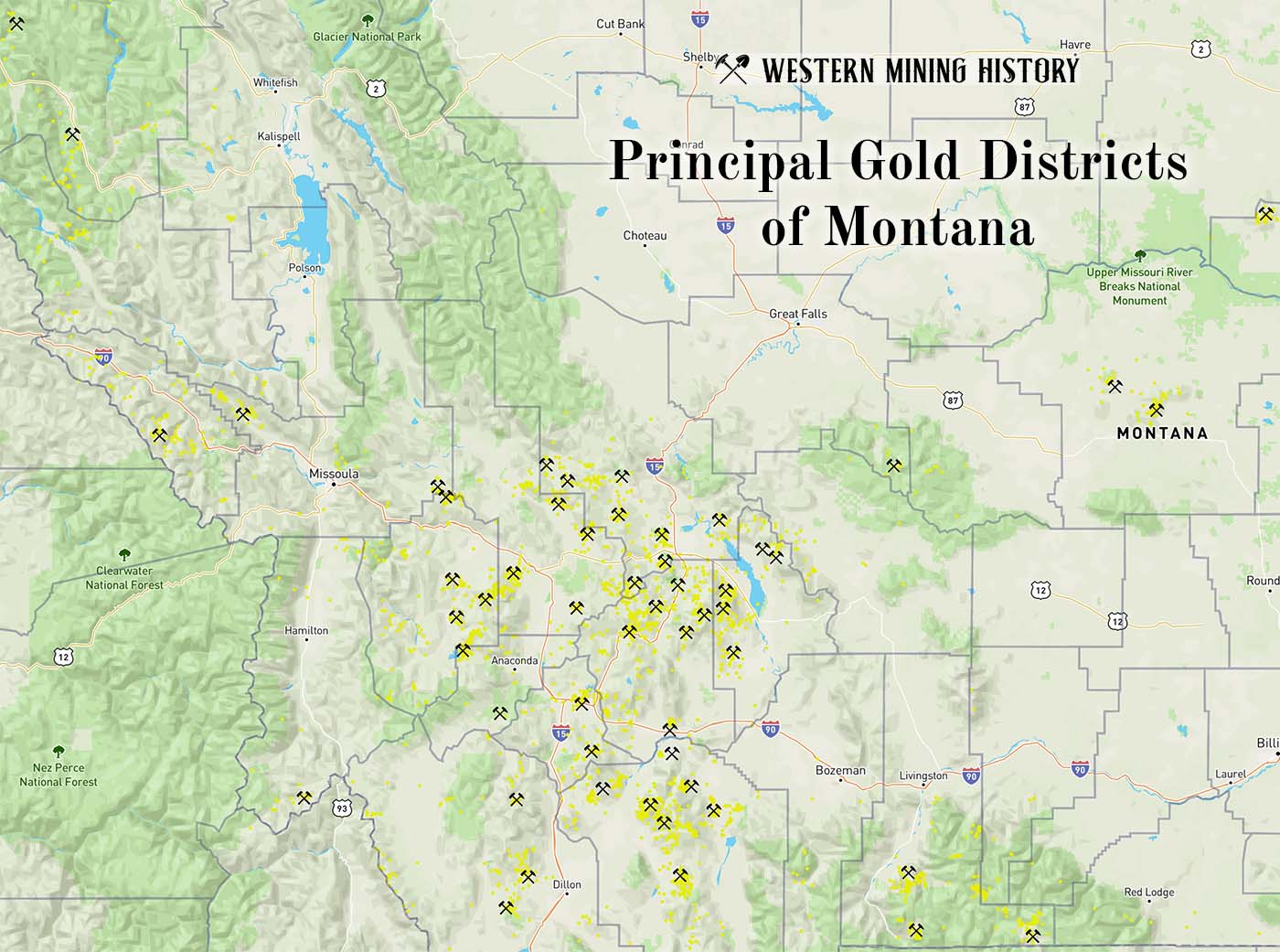The Gold Bug Mine is a gold and silver mine located in Beaverhead county, Montana at an elevation of 5,971 feet.
About the MRDS Data:
All mine locations were obtained from the USGS Mineral Resources Data System. The locations and other information in this database have not been verified for accuracy. It should be assumed that all mines are on private property.
Mine Info
Elevation: 5,971 Feet (1,820 Meters)
Commodity: Gold, Silver
Lat, Long: 45.15944, -112.97500
Map: View on Google Maps
Gold Bug Mine MRDS details
Site Name
Primary: Gold Bug Mine
Secondary: Dakota Mine
Commodity
Primary: Gold
Primary: Silver
Secondary: Copper
Secondary: Lead
Tertiary: Bismuth
Tertiary: Tellurium
Location
State: Montana
County: Beaverhead
District: Bannack District
Land Status
Land ownership: Private
Note: the land ownership field only identifies whether the area the mine is in is generally on public lands like Forest Service or BLM land, or if it is in an area that is generally private property. It does not definitively identify property status, nor does it indicate claim status or whether an area is open to prospecting. Always respect private property.
Holdings
Not available
Workings
Type: Underground
Ownership
Owner Name: Graves Estate, Bannack
Years: 1931 -
Production
Year: 1941
Time Period: 1922 - 1941
Material type: CU
Description: Cp_Grade: ^0.7 %
Year: 1941
Time Period: 1922 - 1941
Material type: AG
Description: Cp_Grade: ^2 Oz/St
Year: 1941
Time Period: 1922 - 1941
Material type: AU
Description: Cp_Grade: ^0.9 Oz/St
Year: 1868
Material type: ORE
Description: Ap_Grade: ^0.9 Oz. Au/Ton
Deposit
Record Type: Site
Operation Category: Past Producer
Deposit Type: Contact Metasomatic
Operation Type: Unknown
Year First Production: 1862
Discovery Year: 1862
Discovery Method: Unknown
Years of Production:
Organization:
Significant: N
Deposit Size: S
Physiography
General Physiographic Area: Rocky Mountain System
Physiographic Province: Northern Rocky Mountains
Physiographic Detail: Pioneer Mountains
Mineral Deposit Model
Not available
Orebody
Form: IRREGULAR PIPES, SHOOTS
Structure
Not available
Alterations
Alteration Type: L
Alteration Text: Garnetization, Oxidation
Rocks
Name: Diorite
Role: Associated
Age Type: Host Rock
Age Young: Mississippian
Name: Diorite
Role: Associated
Age Type: Associated Rock
Age Young: Pliocene
Name: Diorite
Role: Associated
Age Type: Associated Rock Unit
Age Young: Pliocene
Name: Diorite
Role: Associated
Age Type: Host Rock Unit
Age Young: Mississippian
Analytical Data
Not available
Materials
Gangue: Quartz
Gangue: Calcite
Gangue: Epidote
Gangue: Garnet
Comments
Comment (Deposit): REPLACEMENT VEINS AVERAGE 2 OR 3 FEET IN WIDTH, BUT LOCALLY ATTAIN 15 FOOT. VEINS ARE NOT CONTINUOUS ALONG CONTACT.
Comment (Deposit): THE GOLD BUG CLAIM OVERLIES THE DAKOTA CLAIM ON WHICH WAS STARTED THE FIRST QUARTZ LODE MINE IN MONTANA. ; INFO.SRC : 1 PUB LIT
Comment (Workings): SEVERAL SHALLOW SHAFTS AND ADITS. THE EARLY DAKOTA NO. 6 WAS BEST DEVELOPED, WITH A 100 M MAIN SHAFT, 112 M ADIT, AND WINZE SUNK 40 M FROM THE ADIT.
Comment (Production): PRODUCTION INCLUDED 7,437 LB. PB AT 0.2% FROM 2,353 ST ORE
Comment (Development): 6-STAMP MILL ERECTED IN 1863 NEAR THE TWELVE DAKOTA CLAIMS, NOW COVERED BY GOLD BUG AND BLUE GRASS MINES
References
Reference (Deposit): MBMG BULL 85.
Reference (Deposit): MBMG BULL 6.
Reference (Deposit): USGS BULL 574, P. 73.
Reference (Deposit): 1914 COMPILE WINCHELL,A.N., U.S.G.S. BULL. 574
Reference (Deposit): 1931 COMPILE M.B.M.G. BULL. 6
Reference (Deposit): 1972 RECON M.B.M.G. BULL. 85
Reference (Production): M.B.M.G. BULL. 85, U.S.G.S. BULL. 574.
Principal Gold Districts of Montana

In Montana, 54 mining districts have each have produced more than 10,000 ounces of gold. The largest producers are Butte, Helena, Marysville, and Virginia City, each having produced more than one million ounces. Twenty seven other districts are each credited with between 100,000 and one million ounces of gold production. Read more: Principal Gold Districts of Montana.